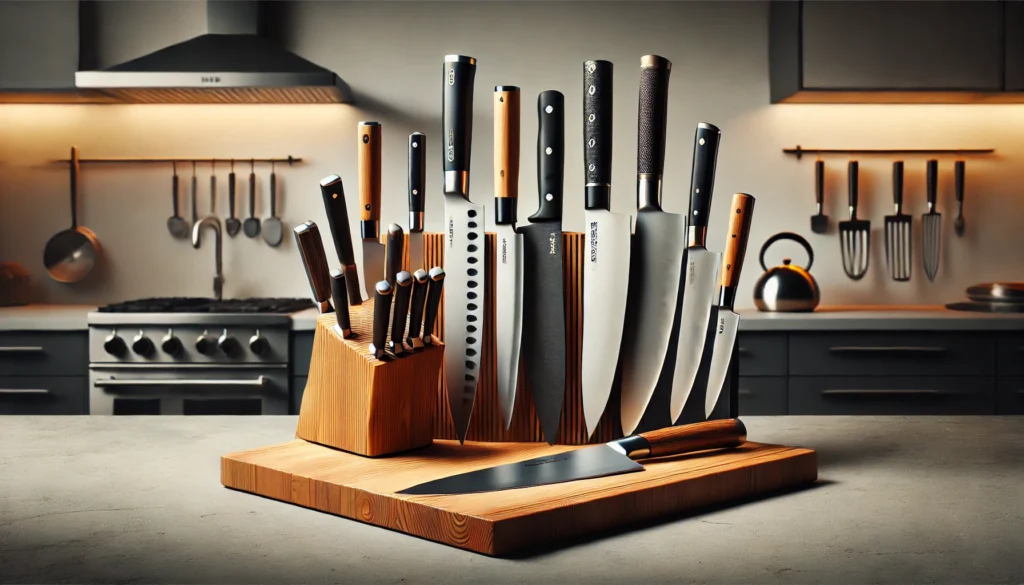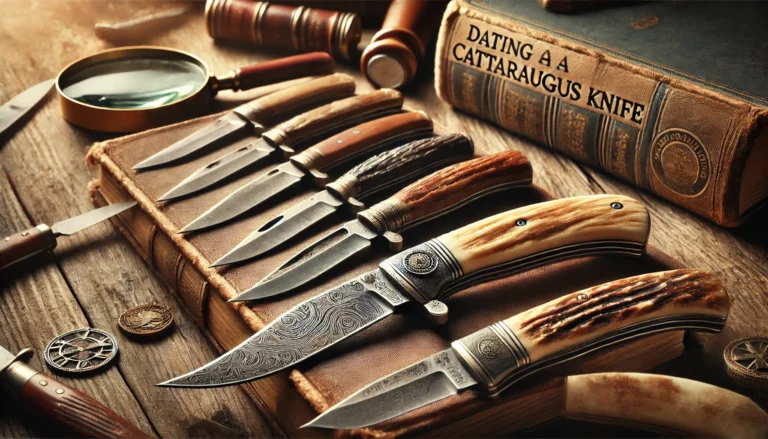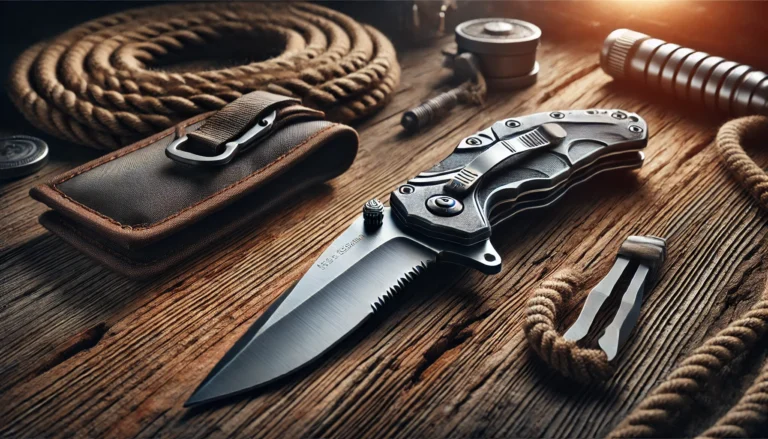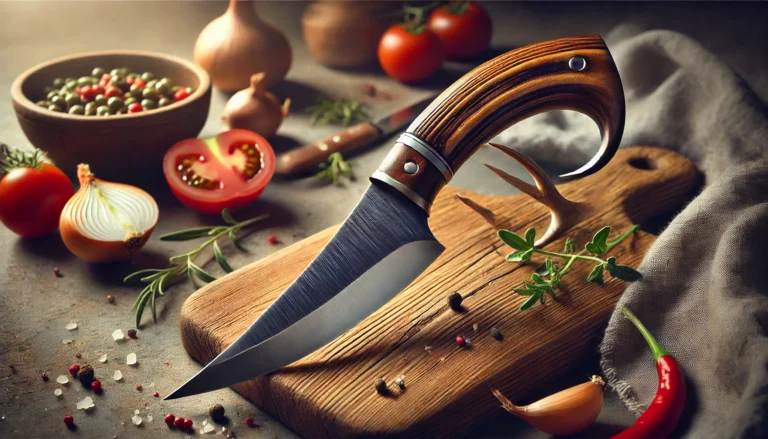
Choosing the right knife can be a daunting task, especially when it comes to Japanese knives. With a rich history and a reputation for precision and craftsmanship, Japanese knives are a favorite among home cooks, culinary enthusiasts, and food bloggers. This guide will help you understand the different types of Japanese knives and how to choose the perfect one for your kitchen needs.
What Japanese Knife Should I Buy? (Short Answer)
If you’re starting, a Gyuto knife is a great choice. It’s versatile and can handle most kitchen tasks. For more precision work, a Petty knife is ideal. Sushi lovers should consider a Yanagiba. Finally, a Nakiri knife is perfect for chopping vegetables.
The Allure of Japanese Knives
Why Choose a Japanese Knife?
Japanese knives are known for their sharpness, precision, and durability. They are crafted using traditional techniques that have been perfected over centuries. The blades are often made from high-quality steel, making them more reliable for various cutting tasks.
The History Behind Japanese Knives
Japanese knife-making dates back to the samurai era, when blacksmiths forged swords for warriors. Over time, these techniques were adapted to create kitchen knives. The result is a tool that combines artistry with functionality.
Popularity Among Home Cooks and Professionals
Many home cooks and professional chefs prefer Japanese knives for their exceptional performance. Whether slicing vegetables or filleting fish, a Japanese knife provides the control and precision to achieve perfect cuts every time.
Types of Japanese Knives
Gyuto – The Japanese Chef’s Knife
The Gyuto is the Japanese equivalent of the Western chef’s knife. It’s versatile and can handle various tasks, from chopping to slicing meat. Its blade is typically thinner, allowing for more precise cuts.
Santoku – The All-Purpose Knife
The Santoku is a favorite for its versatility. “Santoku” means “three virtues,” referring to its ability to handle meat, fish, and vegetables. It’s shorter than the Gyuto, making it easier to control for intricate cuts.
Nakiri – The Vegetable Specialist
The Nakiri knife has a straight edge, which is ideal for cutting vegetables. Its flat blade ensures complete contact with the cutting board, making it perfect for slicing, dicing, and chopping.
Factors to Consider When Choosing a Japanese Knife
Blade Material
Japanese knives are typically made from high-carbon steel or stainless steel. High-carbon steel blades are incredibly sharp but require more maintenance to prevent rust. Stainless steel blades are easier to maintain but may hold an edge shorter.
Handle Type
The handle of a Japanese knife can be made from wood, plastic, or composite materials. Wooden handles offer a traditional feel and elegant look but require more care. Plastic and composite handles are more durable and easier to clean.
Knife Weight and Balance
The weight and balance of a knife affect its performance. A well-balanced knife feels comfortable and reduces fatigue during extended use. Japanese knives are generally lighter than their Western counterparts, providing better precise-cut control.
How to Care for Your Japanese Knife
Proper Cleaning and Drying
Always hand-wash your Japanese knife with mild soap and water. Avoid using a dishwasher, as the harsh detergents and heat can damage the blade. Dry the knife immediately to prevent rust and corrosion.
Sharpening Techniques
Japanese knives require regular sharpening to maintain their edge. Use a whetstone for the best results. Start with a coarse grit to reshape the edge, then finish with a fine grit to polish it. Angle the blade correctly and use consistent pressure for an even edge.
Storage Solutions
Store your Japanese knife in a knife block, magnetic strip, or protective sheath to keep the blade sharp and prevent accidents. Avoid storing it in a drawer where it can knock against other utensils.
Benefits of Using a Japanese Knife
Precision and Control
Japanese knives are designed for precision. Their sharp blades and ergonomic handles provide excellent control, allowing you to easily make clean, accurate cuts.
Enhanced Cooking Experience
Using a high-quality knife can enhance your overall cooking experience. The ease and satisfaction of cutting through ingredients effortlessly can make meal preparation more enjoyable.
Longevity and Durability
With proper care, a Japanese knife can last for years. The high-quality materials and craftsmanship ensure that your knife will withstand the test of time, providing reliable performance for countless meals.
Common Myths About Japanese Knives
Myth 1: Japanese Knives are Fragile
While Japanese knives can be more brittle than Western knives, they are not necessarily fragile. The key is to use them correctly and avoid cutting through bone or frozen foods.
Myth 2: Japanese Knives are Hard to Maintain
Maintaining a Japanese knife is straightforward if you follow proper care guidelines. Regular sharpening and careful cleaning will keep your knife in top condition without much hassle.
Myth 3: Japanese Knives are Only for Professional Chefs
Japanese knives are suitable for anyone who enjoys cooking, regardless of skill level. Their precision and ease of use make them valuable tools for home cooks and professionals.
Recommended Brands for Japanese Knives
Shun
Shun is a well-known brand that offers a wide range of high-quality Japanese knives. Their knives are made from VG-MAX steel, which is known for its sharpness and durability.
Global
Global knives are famous for their sleek design and lightweight construction. These knives are made from CROMOVA 18 stainless steel and offer excellent performance and easy maintenance.
Miyabi
Miyabi knives are crafted in Seki, Japan, and are renowned for their beautiful design and sharpness. They use high-quality steel and traditional techniques to create functional and aesthetically pleasing knives.
Where to Buy Japanese Knives
Specialty Kitchen Stores
Many specialty kitchen stores carry a selection of Japanese knives. Their knowledgeable staff can help you choose the right knife for your needs.
Online Retailers
Online retailers like Amazon and Chef’s Knives To Go offer various Japanese knives. Before making a purchase, read reviews and check return policies.
Directly from Manufacturers
Buying directly from manufacturers can ensure you receive an authentic product. Many Japanese knife makers have online stores where you can browse their collections and make purchases.
Conclusion:
Choosing the right Japanese knife can significantly enhance your cooking experience. Whether you’re a home cook, culinary enthusiast, or food blogger, investing in a high-quality Japanese knife is a decision you won’t regret. When choosing, consider the type of knife, blade material, handle type, and weight. With proper care and maintenance, your Japanese knife will become a trusted tool in your kitchen for years.
Ready to elevate your cooking game? Explore our curated selection of Japanese knives and find the perfect one for your culinary needs.
FAQs
A Gyuto knife, crafted from eco-friendly materials, is a durable and sustainable choice for beginners. It’s versatile and can be used for various tasks like slicing, dicing, and chopping. Its relatively easy maintenance and wide availability make it ideal for those new to Japanese knives.
This depends on your preference and maintenance routine. Carbon steel blades offer exceptional sharpness and long-lasting edge retention and are crafted from eco-friendly materials. However, they require proper care to prevent rust and maintain their durability. Stainless steel blades are easier to maintain and more resistant to rust but may need more frequent sharpening.
The ideal size depends on your comfort and the tasks you’ll be performing. An 8-inch blade is a versatile size suitable for most home cooks. If you prefer a smaller knife for more control, a 6-inch blade might be a better fit.
Yes, many Japanese knives are designed to be ambidextrous, making them suitable for both right and left-handed users. However, some knives have a single-bevel edge specifically for right-handed use. Be sure to check the knife’s design before purchasing.
The price of Japanese knives varies widely, but a good-quality beginner knife can range from $50 to $150. If you cook frequently, it’s worth investing in a higher-quality knife, as it will be more durable and provide a better cutting experience.





